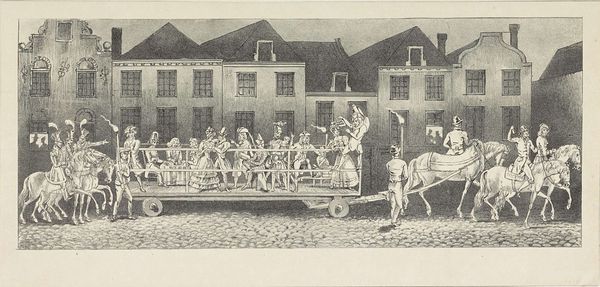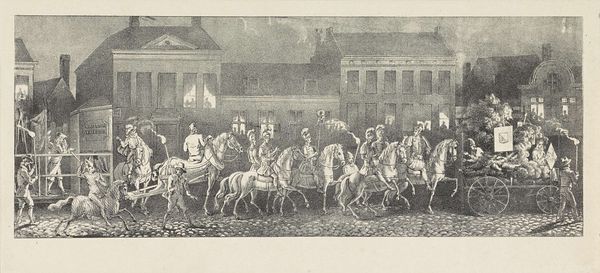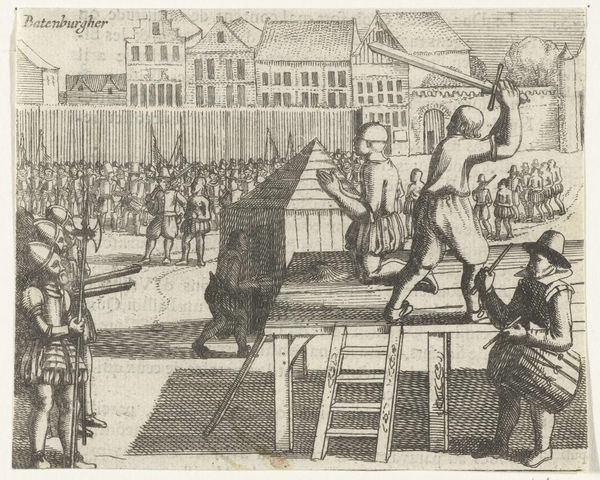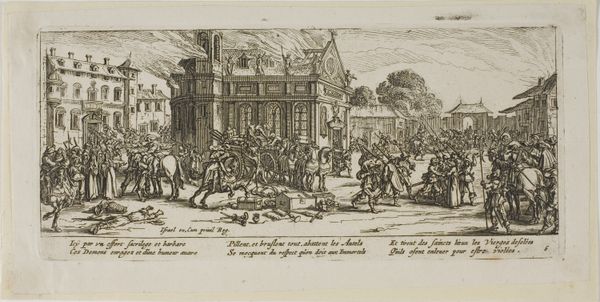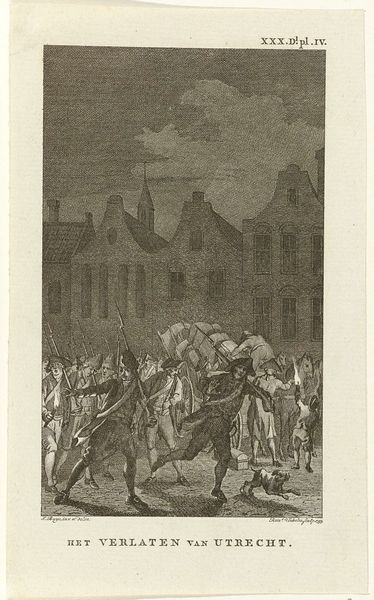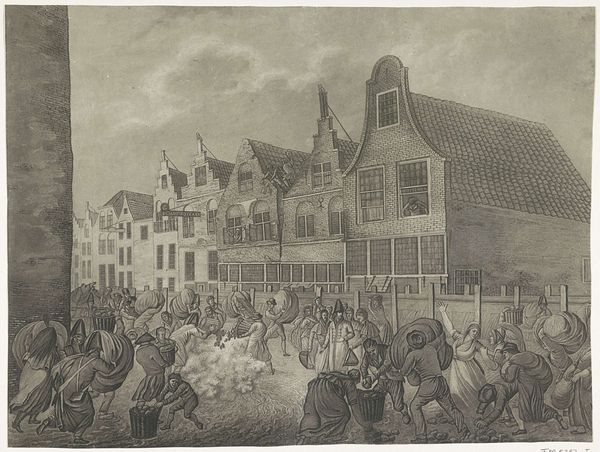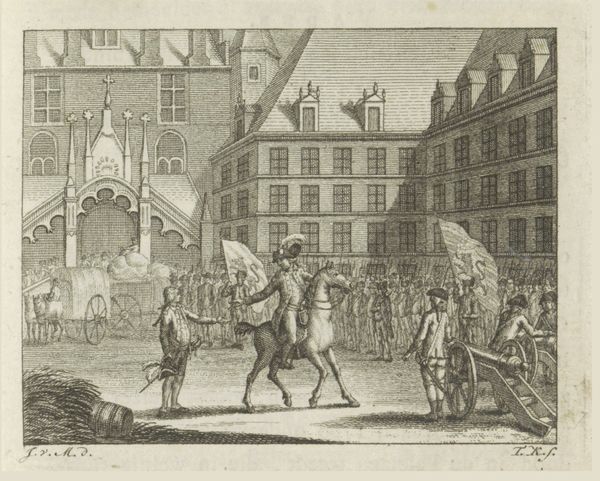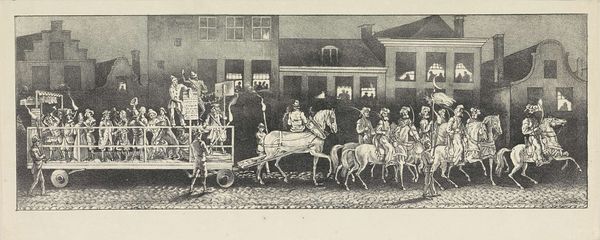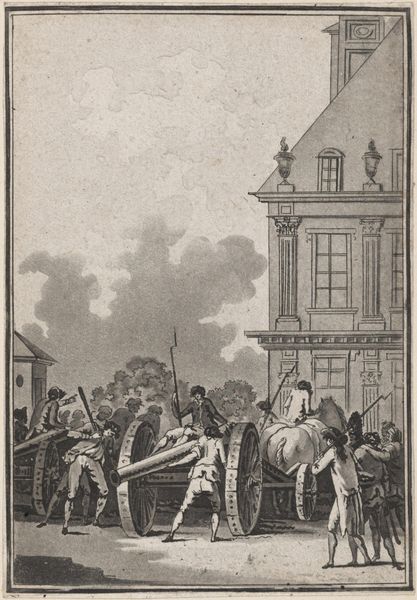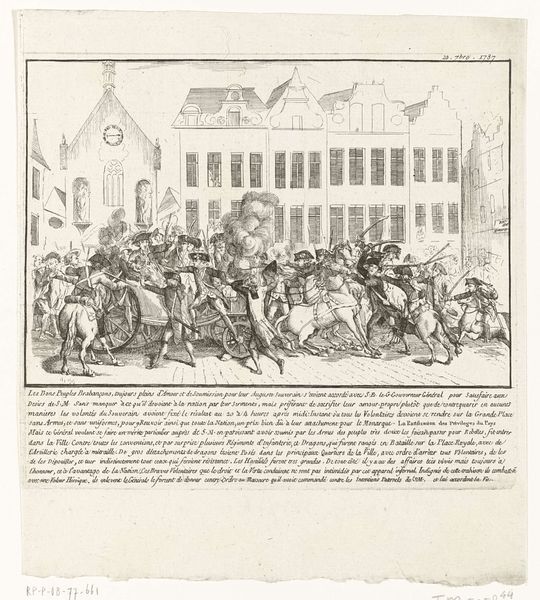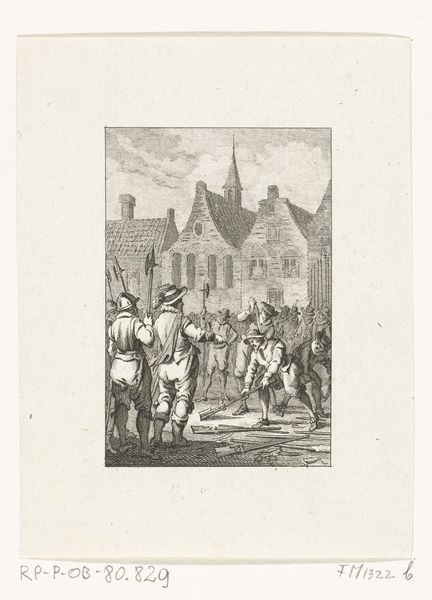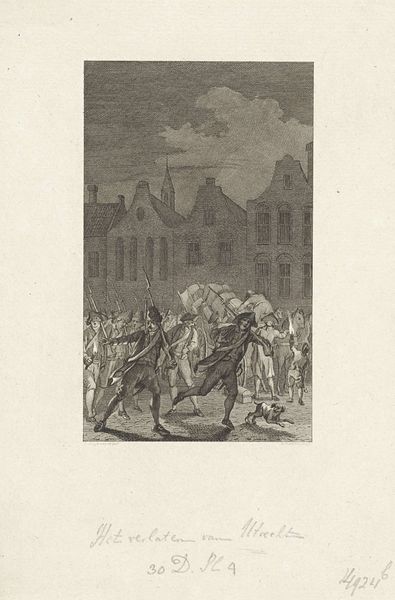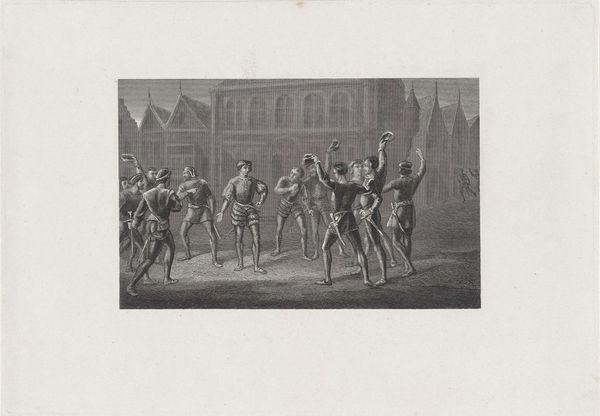
print, engraving
#
narrative-art
# print
#
romanticism
#
cityscape
#
engraving
Dimensions: height 198 mm, width 492 mm
Copyright: Rijks Museum: Open Domain
Editor: So, this engraving by Johannes Houtman, titled "Procession in Masquerade, Plate 4," dating back to 1829, depicts a lively cityscape scene. I find it quite captivating; the mood is festive, though a bit blurry, and it's a detailed rendering. What's your take on it? What stands out to you? Curator: It whispers stories of hidden identities, doesn't it? Carnival on cobblestone. The figures, masked and moving, aren’t just showing themselves but performing. Notice how the artist captures the Romantic era's fascination with pageantry and the individual lost in the collective excitement? Ever feel like you're wearing a mask, darling, revealing only what the world expects? Editor: It’s true, I can sense that duality. The procession both conceals and reveals. What about the city in the background; how much of the artwork meaning do you attribute to its architectural representation? Curator: The cityscape adds depth, framing the parade as a fleeting moment against a stable, ordered society. The tall buildings become watchful eyes. Houtman isn't just capturing a street scene, he's setting the stage for human drama – and isn’t drama all about what happens between the acts, darling? Look closely: Do you perceive social critique, commentary, or a purely festive illustration? Editor: I would say…a festive event with maybe a glimpse of what’s going on in society behind it all, nothing too radical. That's something to ponder. Curator: Precisely. This reminds us to seek beneath the surface and perceive things through feeling rather than through plain observation. The joy and social structures all intermingle; and in fact it becomes difficult to say where one starts and another one ends. It all reminds me of life! Editor: This was very enriching! It really encouraged a reflective and thoughtful examination, moving beyond mere surface appreciation.
Comments
No comments
Be the first to comment and join the conversation on the ultimate creative platform.
